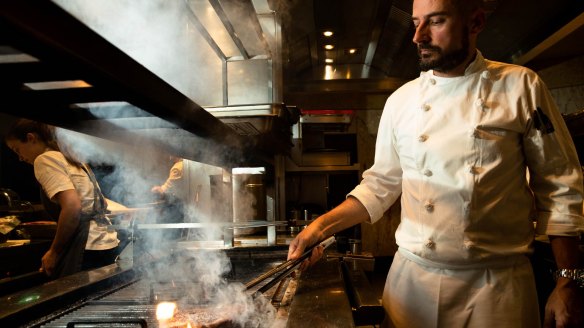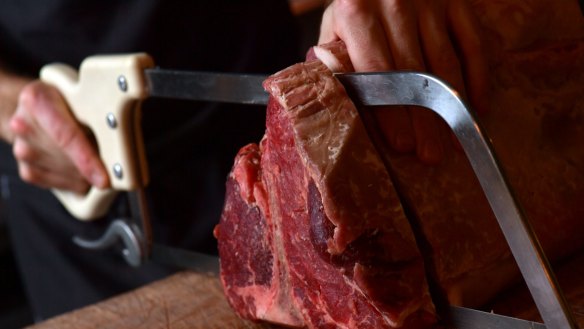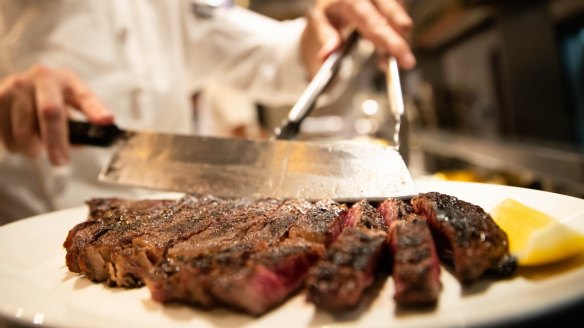High steaks: Australian beef prices go up and up ... and up

Australian red meat retail costs have gone through the roof, with the price of young cattle at market more than doubling in less than two years.
The reason for the price rise is largely due to rising beef demand, both in Australia and globally, coinciding with a lush pasture season that has led to cattle farmers keeping stock to breed more calves.

"There are other factors pushing the price up too," says James Madden, managing director of Victorian-based meat distributor Flinders + Co which distributes steaks across Sydney and Melbourne.
"People aren't travelling overseas or spending money on experiences – instead they are buying food, particularly meat. Add to this factors such as African swine flu in China that has seen that nation's meat lovers switch partially from pork to lamb and beef, thus increasing demand for red meat globally.
A recent outbreak of Mad Cow Disease in Brazil has further contributed to price volatility in the global red meat sector.

All of this means the price of young Australian cattle at market has jumped from $4.60 per kilogram in January 2020 to $10.65 this week, according to the benchmark Eastern Young Cattle Indicator.
Prime cut rib-eye steaks are pushing $70 per kilogram in butchers and supermarkets selling beef mince for $10 a kilogram two years ago are now charging up to $20.
It's not just beef that consumers will be paying more for in restaurants and supermarkets. COVID-19 travel restrictions have affected the movement of itinerant workers to process lamb in central NSW. Lamb cutlets are selling for about $4.50 each, up a dollar per unit on last year.
Meanwhile, government mandated staff restrictions for Victorian abattoirs have affected pork processing in the state. There may well be a national ham shortage for Christmas.
Madden says the size of steaks is also increasing. "While farmers are buying up younger animals, they are holding onto their existing stock longer, feeding them up on pasture which means bigger cattle are going to the abattoirs."
The result for the consumer is bigger cuts of beef, says the meat distributor, noting that some chefs are now cutting sirloins in half before grilling because they are so large.
Rockpool Bar and Grill executive chef Corey Costelloe says the price of beef has gone up by 8 per cent in the past two weeks for his high-end restaurant in the Sydney CBD.
"Inevitably, we have had to pass some, not all, of those rises to the customer," he says. "We break the news to them and explain the reasons that are out of our control."
Costelloe says that as chefs in smaller restaurants find it increasingly expensive to buy beef from wholesalers, they will move away from prime steaks such as sirloin and shift to secondary cuts such as flat iron and bavette that require a lot more preparation to remove connective tissue.
"They cost less, taste great, and they eat extremely well," he says. "But as more and more chefs move to these secondary cuts, they push the price up higher and higher."
Rangers Valley managing director Keith Howe runs large cattle feedlots at Glen Innes in the Northern Tablelands and produces some of Australia's most premium marbled beef.
"This is a great time for farmers who are breeding cattle," he says. "After years of drought, they are making a good income."
For Howe's business, however, high beef prices are a risky game. He buys cattle high and fattens them slowly over months. If the price drops, he loses.
Chef Ross Lusted of Woodcut restaurant at Crown Sydney says that high meat prices are cyclical and he has factored them into his business.
He refers to the "droughts and flooding rains" nature of the Australian climate – abundant rains often followed by years of dry. Industry pundits expect meat prices will continue to rise over the next six months, but at some point it will become no longer profitable to buy young animals to fatten, thus stabilising the price.
"We have secured our supply and don't need to buy on the day-to-day market," says Lusted. "We have been told that there will be no tri-tip sirloin in two months' time. So we are managing that.
However, Lusted also notes that his guests are eating less meat. "Fifty per cent of our menu is based around vegetables."
Madden says that Australia has historically been very fortunate with red meat prices and although consumers are now paying more, the quality, especially for grass-fed beef, is remarkable.
"Over the next six months, we are going to have some of the best red meat we have seen in years in terms of tenderness, marbling and flavour," he says, explaining that the nutrition of lush pastures will improve as the weather warms.
"Perhaps pay more, appreciate the quality – but eat less."
Restaurant reviews, news and the hottest openings served to your inbox.
Sign up- More:
- Restaurant news
